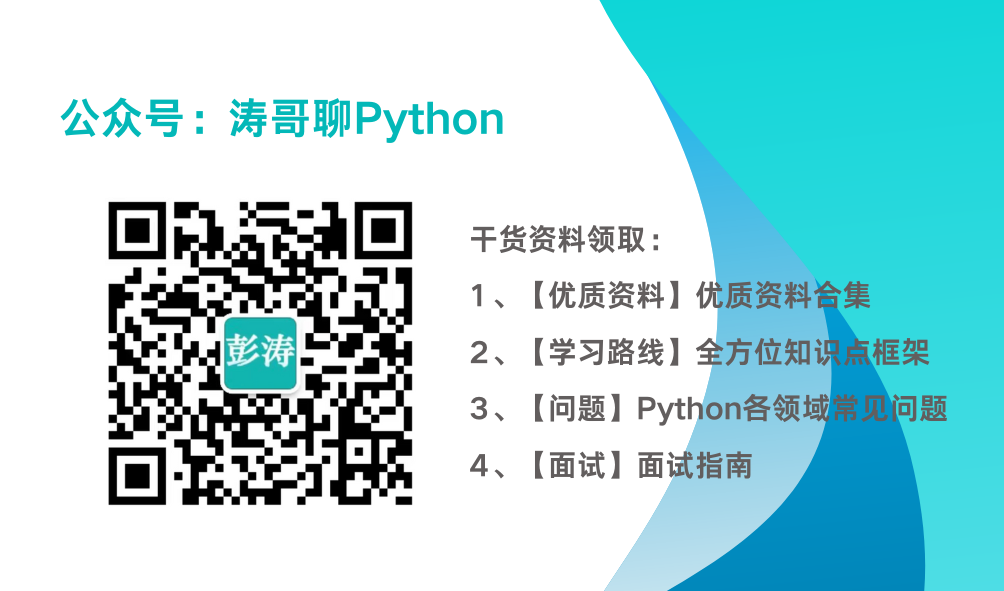
更多Python学习内容:ipengtao.com
大家好,我是彭涛,今天为大家分享 Python中判定列表是否包含某个元素的方法,全文4000字,阅读大约10分钟。
在Python编程中,判定一个列表是否包含特定元素是一项常见任务。本文将深入研究各种方法,从基本的成员运算符到更高级的函数和库的应用,为大家提供全方位的指南和实用示例。
1. 成员运算符 in 和 not in
最基本的方法是使用成员运算符 in 和 not in。这两个运算符能够快速判定一个元素是否存在于列表中。
# 使用成员运算符
my_list = [1, 2, 3, 4, 5]# 判定元素是否存在
element_to_check = 3
if element_to_check in my_list:print(f"{element_to_check} 存在于列表中。")
else:print(f"{element_to_check} 不存在于列表中。")# 或者使用 not in 判定不存在
element_to_check = 6
if element_to_check not in my_list:print(f"{element_to_check} 不存在于列表中。")
else:print(f"{element_to_check} 存在于列表中。")2. 使用 count() 方法
count() 方法能够统计列表中特定元素的出现次数,通过判断次数是否大于零,能够得知元素是否存在。
# 使用 count() 方法
element_to_check = 3
if my_list.count(element_to_check) > 0:print(f"{element_to_check} 存在于列表中。")
else:print(f"{element_to_check} 不存在于列表中。")3. 使用 any() 函数
any() 函数接受一个可迭代对象,只要其中任何一个元素为真(即非零、非空、非None等),就返回 True。这个特性可以用于判定列表是否包含某个元素。
# 使用 any() 函数
element_to_check = 3
if any(x == element_to_check for x in my_list):print(f"{element_to_check} 存在于列表中。")
else:print(f"{element_to_check} 不存在于列表中。")4. 使用 filter() 函数
filter() 函数返回一个迭代器,其中包含使函数返回 True 的元素。我们可以使用 bool 函数作为过滤器,判断元素是否存在于列表中。
# 使用 filter() 函数
element_to_check = 3
if next(filter(lambda x: x == element_to_check, my_list), None) is not None:print(f"{element_to_check} 存在于列表中。")
else:print(f"{element_to_check} 不存在于列表中。")5. 使用 set 转换
将列表转换为集合(set)能够大幅提高查找速度,因为集合是哈希表,查找操作的时间复杂度为 O(1)。
# 使用 set 转换
element_to_check = 3
if element_to_check in set(my_list):print(f"{element_to_check} 存在于列表中。")
else:print(f"{element_to_check} 不存在于列表中。")6. 使用 bisect 模块
如果列表是有序的,可以使用 bisect 模块进行二分查找,进一步提高查找效率。
from bisect import bisect_left# 使用 bisect 模块
sorted_list = sorted(my_list)
element_to_check = 3
if bisect_left(sorted_list, element_to_check):print(f"{element_to_check} 存在于列表中。")
else:print(f"{element_to_check} 不存在于列表中。")7. 使用 numpy 库
对于数值型列表,numpy 提供了强大的数组操作,包括成员判定。
import numpy as np# 使用 numpy 库
element_to_check = 3
if np.isin(element_to_check, my_list):print(f"{element_to_check} 存在于列表中。")
else:print(f"{element_to_check} 不存在于列表中。")8. 使用 any() 和生成器表达式
结合 any() 和生成器表达式,可以在一行代码中进行简洁的判定。
# 使用 any() 和生成器表达式
element_to_check = 3
if any(element == element_to_check for element in my_list):print(f"{element_to_check} 存在于列表中。")
else:print(f"{element_to_check} 不存在于列表中。")9. 使用 all() 函数
反过来,如果想要确认列表中所有元素均满足某个条件,可以使用 all() 函数。
# 使用 all() 函数
condition = all(x > 0 for x in my_list)
if condition:print("列表中所有元素均大于零。")
else:print("列表中存在不大于零的元素。")10. 使用自定义函数
有时,可能需要更复杂的条件判定,这时候可以定义一个自定义函数。
# 使用自定义函数
def contains_element(lst, element):return any(x == element for x in lst)element_to_check = 3
if contains_element(my_list, element_to_check):print(f"{element_to_check} 存在于列表中。")
else:print(f"{element_to_check} 不存在于列表中。")11. 使用 index() 方法
index() 方法能够返回指定元素的索引值,如果元素不存在,则抛出 ValueError。可以通过捕获异常的方式判断元素是否存在。
# 使用 index() 方法
element_to_check = 3
try:index = my_list.index(element_to_check)print(f"{element_to_check} 存在于列表中,索引值为 {index}。")
except ValueError:print(f"{element_to_check} 不存在于列表中。")12. 使用 itertools.chain() 函数
itertools.chain() 函数能够将多个可迭代对象连接在一起,结合 any() 函数,可以用于判定多个列表是否包含某个元素。
from itertools import chain# 使用 itertools.chain() 函数
element_to_check = 3
lists = [[1, 2, 3], [4, 5, 6], [7, 8, 9]]
if any(element_to_check in sublist for sublist in chain(*lists)):print(f"{element_to_check} 存在于列表中。")
else:print(f"{element_to_check} 不存在于列表中。")13. 使用 collections.Counter 类
如果需要判定某个元素在列表中出现的次数,可以使用 collections.Counter 类。
from collections import Counter# 使用 collections.Counter 类
element_to_check = 3
element_counts = Counter(my_list)
if element_counts[element_to_check] > 0:print(f"{element_to_check} 存在于列表中。")
else:print(f"{element_to_check} 不存在于列表中。")14. 使用 pandas 库
对于数据科学领域,pandas 库提供了强大的数据结构和数据分析工具,可以方便地进行元素判定。
import pandas as pd# 使用 pandas 库
element_to_check = 3
df = pd.DataFrame({'column_name': my_list})
if element_to_check in df['column_name'].values:print(f"{element_to_check} 存在于列表中。")
else:print(f"{element_to_check} 不存在于列表中。")总结
在本篇文章中,深入研究了在Python中判定列表是否包含某个元素的多种方法,提供了全面的指南和实用示例代码。从基础的成员运算符 in 和 not in,到更高级的 count() 方法、any() 函数,再到使用 set 转换、bisect 模块、numpy 库等,每种方法都有其特点和适用场景。大家可以根据需求选择最合适的方法,确保在列表操作中高效地进行元素判定。
不仅介绍了各种直接的判定方式,还涉及了一些巧妙的技巧,如使用 filter() 函数、自定义函数、index() 方法、itertools.chain() 函数等,展示了Python中多样化的元素判定手段。此外,还介绍了一些适用于数据科学领域的库,如 pandas,为大家提供更丰富的选择。总体而言,通过学习这些方法,将更加熟练地处理列表操作,确保代码的可读性和高效性。
如果你觉得文章还不错,请大家 点赞、分享、留言 下,因为这将是我持续输出更多优质文章的最强动力!
更多Python学习内容:ipengtao.com
干货笔记整理
100个爬虫常见问题.pdf ,太全了!
Python 自动化运维 100个常见问题.pdf
Python Web 开发常见的100个问题.pdf
124个Python案例,完整源代码!
PYTHON 3.10中文版官方文档
耗时三个月整理的《Python之路2.0.pdf》开放下载
最经典的编程教材《Think Python》开源中文版.PDF下载

点击“阅读原文”,获取更多学习内容

友元)
)


】)



)





 - EA专场)



